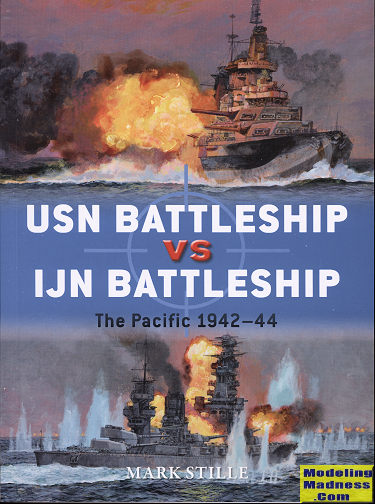 Prior to
WWII, the overall naval planning of the major powers was centered around the big
gun ship; battleships. It was also realized that these things were the F-35 of
the day and were stupidly expensive to develop, build, man, and maintain. So
there were treaties developed that would limit not only the size of naval
vessels, but also the number that could be built and kept in service by various
nations. Top of the list were battleships.
Prior to
WWII, the overall naval planning of the major powers was centered around the big
gun ship; battleships. It was also realized that these things were the F-35 of
the day and were stupidly expensive to develop, build, man, and maintain. So
there were treaties developed that would limit not only the size of naval
vessels, but also the number that could be built and kept in service by various
nations. Top of the list were battleships.
In the Pacific, the Japanese pretty well had the best
navy. This was in spite of the treaty requirements as the Japanese fudged things
a bit. Indeed, the first battleship to carry 16 inch naval rifles was the
Japanese ship Nagato. Other nations followed suit. As ships were limited by
tonnage, there was a lot of fudging around as to how best to build what they
felt was needed and still stay within the limits.
Warships are by their very nature a trade off of
protection, firepower, and speed. A lot of protection means more weight and less
speed. Bigger guns also means more weight and less speed. More speed means
smaller guns and/or less armor protection. One way around this was to protect
only the really valuable parts of the ship (magazines, engine rooms, etc) and
leave the rest to chance. Both the US and Japanese followed this theory to some
extent both before and during the treaty time. After the Japanese pulled out of
the treaty in the late 1930s, all that went out the window and we see things
like the USS Missouri and the Yamato.
However, during the Pacific War, it was the first year,
for the most part, that saw the greatest amount of action. Few, however, realize
that battleship to battleship action was quite rare. In fact, there were only
two occasions that this occurred. One was Guadalcanal in 1942 where the
Kirishima, a ship from 1915, though modernized, faced two very modern US ships,
the Washington and South Dakota. The other was the Battle of Surigao Strait in
1944 when two WWI era Japanese ships, the Fuso and Yamashiro faced six US
battleships in the last big gun duel.
The author covers the development of battleships on both
the US and Japanese side as well as modifications done to the ships and the
equipment they carried. It also covers the difference in crew training as well
the men who commanded these ships in battle. The meat of the book covers the two
battles in which the participants engaged each other. It makes for an
interesting and insightful read and one that I know you will enjoy.
December 2017
Copyright ModelingMadness.com
For more on the complete line of Osprey books,
visit www.ospreypublishing.com .
If you would like your product reviewed fairly and quickly, please
contact
me or see other details in the
Note to
Contributors.
 Prior to
WWII, the overall naval planning of the major powers was centered around the big
gun ship; battleships. It was also realized that these things were the F-35 of
the day and were stupidly expensive to develop, build, man, and maintain. So
there were treaties developed that would limit not only the size of naval
vessels, but also the number that could be built and kept in service by various
nations. Top of the list were battleships.
Prior to
WWII, the overall naval planning of the major powers was centered around the big
gun ship; battleships. It was also realized that these things were the F-35 of
the day and were stupidly expensive to develop, build, man, and maintain. So
there were treaties developed that would limit not only the size of naval
vessels, but also the number that could be built and kept in service by various
nations. Top of the list were battleships.